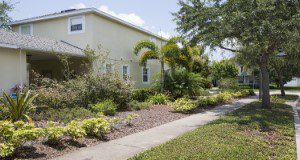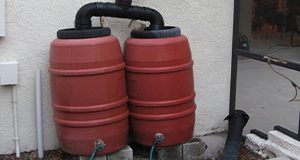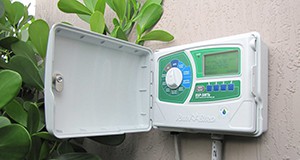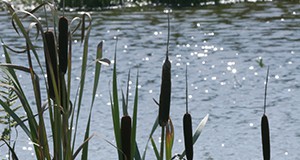This new 3-page publication of the Department of Agricultural Education and Communication is the first in a series that will help Extension agents, nonprofits, agency personnel, and other promoters of community development better understand both the issue of high utility bills among low-income residents and what they can do to help. This first publication provides an overview of one program approach taken by a group of volunteers in Alachua County, the Community Weatherization Coalition, which uses a model of trained “energy coaches.” Written by Paul Monaghan, Sarah Blucher, Marianne Schmink, Alane Humrich, Jennison Kipp, and Wendell Porter.
https://edis.ifas.ufl.edu/wc368
Tag: Paul Monaghan
What the Agricultural Sector in Florida Needs to Know about Heat-Related Illness (HRI)
Heat-related illness (HRI) can range from rashes, fainting, and cramps to heat exhaustion and heat stroke. It can be fatal, and all outdoor workers in agriculture (as well as those in high-heat indoor settings such as greenhouses) are at risk. This new 6-page publication of the UF/IFAS Department of Agricultural Education and Communication provides basic information on how to recognize the symptoms of HRI, on the underlying physiological processes and related risk factors, and on how to treat it. This publication also provides a list of preventative measures that growers, supervisors, and agricultural workers can follow, along with links to additional resources. Written by Paul Monaghan, Karissa Raskin, Maria Morera, Antonio Tovar, Valerie Mac, and Joan Flocks.
https://edis.ifas.ufl.edu/wc359
Rain Barrel Owners: Meeting the Programming Needs of This Unique Extension Audience
Rain barrels make it easy for households to practice water conservation. Extension programs for rain barrel construction, decoration, and giveaways can raise awareness for (and encourage use of) this technology. This 9-page document will provide insight into the behavior and attitudes of rain barrel owners so that Extension professionals may gain a better understanding of this unique audience. Written by Emily Ott, Paul Monaghan, Wendy Wilber, Lynn Barber, and Karissa Raymond and published by the UF/IFAS Department of Agricultural Education and Communication, March 2018.
http://edis.ifas.ufl.edu/wc297
Frequently Asked Questions about Soil Moisture Sensor Irrigation Controllers (SMS)
![]()
A soil moisture sensor (SMS) is a device that detects how much moisture is in the soil and prevents an irrigation system from running when it is not needed. This 4-page fact sheet written by Paul Monaghan, Ondine Wells, Michael Dukes, Maria Morera, and Laura Warner and published by the Department of Agricultural Education and Communications explains how the technology functions as well as how to install, program, operate, and maintain an SMS for a money- and water-wise sustainable home landscape that’s lush and beautiful.
http://edis.ifas.ufl.edu/wc238
Frequently Asked Questions about Evapotranspiration (ET) Irrigation Controllers
Evapotranspiration is the amount of water that is released into the atmosphere through evaporation and plant transpiration. An evapotranspiration irrigation controller is a device that uses data about the landscape, the type of irrigation system, and local weather conditions to determine when and how much to irrigate. This 5-page fact sheet written by Paul Monaghan, Ondine Wells, Michael Dukes, Maria Morera, and Laura Warner and published by the Department of Agricultural Education and Communications explains how the technology functions as well as how to install, program, operate, and maintain an ET controller for a money- and water-wise sustainable home landscape that’s lush and beautiful.
http://edis.ifas.ufl.edu/wc237
Strategies to Encourage Adoption of Stormwater Pond Best Management Practices (BMPs) by Homeowners
Man-made ponds can be a useful way to collect, store, and treat stormwater runoff in residential areas. However, these ponds can become polluted when runoff contains fertilizers, pesticides, and pet waste from the neighborhood. This 8-page fact sheet outlines several best management practices (BMPs) for reducing stormwater pond pollution. Based on a survey of residents who live near stormwater ponds, the authors recommend strategies Extension educators can use to encourage residents to adopt these BMPs. Written by Emily Ott, Paul Monaghan, Ondine Wells, Gail Hansen, Laura Warner, and Michelle Atkinson, and published by the UF Department of Agricultural Education and Communication, July 2015.
http://edis.ifas.ufl.edu/wc214
Perceptions of Florida-Friendly Landscapes: Linking Visual Quality and Environmental Health through Landscape Codes
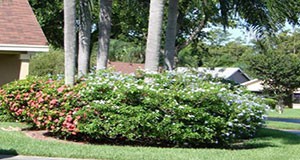
Early efforts to promote Florida-Friendly landscapes emphasized the use of drought-tolerant plants, which created a negative association with a visually unappealing landscape. This has hampered the promotion of FFL yards and the adoption by homeowner associations. But recently many homeowners are rethinking their landscape maintenance and plant choices and HOAs are considering promoting environmentally friendly landscapes but express uncertainty about recommending FFL because of the need to maintain visual quality. We conducted a study to address both groups’ concerns and help develop FFL-oriented landscape codes that meet both groups’ needs. This 7-page fact sheet was written by Gail Hansen, Laura Warner, Paul Monaghan, Emily Ott, Tim Fogarty, Claire Lewis, and Esen Momol, and published by the UF Department of Environmental Horticulture, April 2015.
http://edis.ifas.ufl.edu/ep519
The Florida Natural Resources Leadership Institute
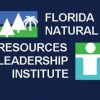 We are all dependent on Florida’s natural resources for jobs, health, and our quality of life. Decisions about the management and conservation of the State’s environment involve complex sets of issues and stakeholders. Expensive and time-consuming disputes often emerge over topics such as endangered species, land use, coastal and marine resources, and water quality and quantity. Effective leadership in managing such issues requires a specialized set of skills, tools, and strategies to build trust and promote innovation and collaboration among competing interests. To meet these needs, the Florida Natural Resources Leadership Institute (NRLI) was founded in 1998 to bring together professionals and stakeholders from diverse natural resource sectors to develop the skills required to engage the public and one another in collaborative decision-making. This 4-page fact sheet was written by Paul Monaghan, Emily Ott, Carol Lippincott, Ondine Wells, Jessica Ireland, Jon Dain, Bruce Delaney, and Roy Carriker, and published by the UF Department of Food and Resource Economics, December 2014.
We are all dependent on Florida’s natural resources for jobs, health, and our quality of life. Decisions about the management and conservation of the State’s environment involve complex sets of issues and stakeholders. Expensive and time-consuming disputes often emerge over topics such as endangered species, land use, coastal and marine resources, and water quality and quantity. Effective leadership in managing such issues requires a specialized set of skills, tools, and strategies to build trust and promote innovation and collaboration among competing interests. To meet these needs, the Florida Natural Resources Leadership Institute (NRLI) was founded in 1998 to bring together professionals and stakeholders from diverse natural resource sectors to develop the skills required to engage the public and one another in collaborative decision-making. This 4-page fact sheet was written by Paul Monaghan, Emily Ott, Carol Lippincott, Ondine Wells, Jessica Ireland, Jon Dain, Bruce Delaney, and Roy Carriker, and published by the UF Department of Food and Resource Economics, December 2014.
http://edis.ifas.ufl.edu/fe667
Improving Extension Program Development Using Audience Segmentation
 Developing an impactful Extension program depends on acquiring a deep understanding of the audience’s specific needs and preferences. Audience segmentation allows an agent to address the variability among Extension clientele, in order to deliver the programming and messages that are most meaningful to an audience/clientele segment. This 5-page fact sheet was written by Paul Monaghan, Laura Warner, Ricky Telg and Tracy Irani, and published by the UF Department of Agricultural Education and Communication, November 2014. (UF/IFAS photo Marisol Amador)
Developing an impactful Extension program depends on acquiring a deep understanding of the audience’s specific needs and preferences. Audience segmentation allows an agent to address the variability among Extension clientele, in order to deliver the programming and messages that are most meaningful to an audience/clientele segment. This 5-page fact sheet was written by Paul Monaghan, Laura Warner, Ricky Telg and Tracy Irani, and published by the UF Department of Agricultural Education and Communication, November 2014. (UF/IFAS photo Marisol Amador)
http://edis.ifas.ufl.edu/wc188
Extension and Community Resilience: Improving Community Disaster Preparedness Using Online Resources
 As Extension agents work to improve the quality of life in their communities, they must increase the capacity to respond to disasters, especially in high risk areas (which includes most of coastal Florida). Community Resiliency is a community’s ability to quickly recover from adversity and it can be enhanced through planning and adaptation using easily available online resources. This 4-page fact sheet describes supplemental educational materials that can be added to community resiliency training, offering background information and specific tools for disaster preparation. Written by Emily Ott, Paul Monaghan, and Timothy Fogarty, and published by the UF Department of Agricultural Education and Communication, October 2014. (UF/IFAS photo by Milt Putnam)
As Extension agents work to improve the quality of life in their communities, they must increase the capacity to respond to disasters, especially in high risk areas (which includes most of coastal Florida). Community Resiliency is a community’s ability to quickly recover from adversity and it can be enhanced through planning and adaptation using easily available online resources. This 4-page fact sheet describes supplemental educational materials that can be added to community resiliency training, offering background information and specific tools for disaster preparation. Written by Emily Ott, Paul Monaghan, and Timothy Fogarty, and published by the UF Department of Agricultural Education and Communication, October 2014. (UF/IFAS photo by Milt Putnam)
http://edis.ifas.ufl.edu/wc187
Measuring Community Resilience using Online Toolkits
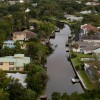 When we return to the scene of recent disasters like New Orleans, we find that some communities and neighborhoods are able to recover faster than others, while some never completely recover. Community Resilience is defined as the ability for a community to bounce back from a disaster, adapt to changes, and become more sustainable. The resilience assessment and planning tools reviewed here range from simple, ready-to-print worksheets intended for use by average citizens to comprehensive planning exercises more appropriate for city planners, emergency service providers, and elected officials. Not all of the toolkits will apply to every community. This 6-page fact sheet was written by Paul Monaghan, Emily Ott, and Timothy Fogarty, and published by the UF Department of Agricultural Education and Communication, July 2014. (UF/IFAS photo by Tyler Jones)
When we return to the scene of recent disasters like New Orleans, we find that some communities and neighborhoods are able to recover faster than others, while some never completely recover. Community Resilience is defined as the ability for a community to bounce back from a disaster, adapt to changes, and become more sustainable. The resilience assessment and planning tools reviewed here range from simple, ready-to-print worksheets intended for use by average citizens to comprehensive planning exercises more appropriate for city planners, emergency service providers, and elected officials. Not all of the toolkits will apply to every community. This 6-page fact sheet was written by Paul Monaghan, Emily Ott, and Timothy Fogarty, and published by the UF Department of Agricultural Education and Communication, July 2014. (UF/IFAS photo by Tyler Jones)
http://edis.ifas.ufl.edu/wc172
Adaptation Approaches to Sea-Level Rise in Florida
 There is consensus among the scientific community that climate change is occurring and will have far-reaching effects on our global ecosystems and human systems. In Florida, adaptation to climate change is occurring in both natural and human systems. As coastal communities prepare for sea-level rise, they can use several strategies to integrate natural adaptation processes into their planning processes. By taking a proactive approach to adaptation rather than a reactive one, communities will be able to better protect the resources upon which they depend. This 4-page fact sheet was written by Ondine Wells, Whitney Gray, and Paul Monaghan, and published by the UF Department of Agricultural Education and Communication, July 2014.
There is consensus among the scientific community that climate change is occurring and will have far-reaching effects on our global ecosystems and human systems. In Florida, adaptation to climate change is occurring in both natural and human systems. As coastal communities prepare for sea-level rise, they can use several strategies to integrate natural adaptation processes into their planning processes. By taking a proactive approach to adaptation rather than a reactive one, communities will be able to better protect the resources upon which they depend. This 4-page fact sheet was written by Ondine Wells, Whitney Gray, and Paul Monaghan, and published by the UF Department of Agricultural Education and Communication, July 2014.
http://edis.ifas.ufl.edu/wc171
Using Social Norms to Increase Behavior Change in Sustainable Landscaping
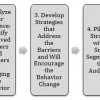 When Extension agents work to encourage behavioral changes in their community through educational programming, they may already be using some elements of social marketing. Extension educators can use an understanding of their clients’ reservations and inclinations toward a behavior, or their benefits and barriers, to develop strategies that encourage behavior change. Common strategies include prompts and reminders, incentives, and changing social norms. These strategies may be piloted on a small scale, modified if necessary, and then implemented on a large scale and further evaluated. This publication’s purpose is to describe the use of social norms as a social marketing strategy and make recommendations for applying social norms as a tool in Extension programming. This 5-page fact sheet was written by Laura Sanagorski and Paul Monaghan , and published by the UF Department of Agricultural Education and Communication, February 2014.
When Extension agents work to encourage behavioral changes in their community through educational programming, they may already be using some elements of social marketing. Extension educators can use an understanding of their clients’ reservations and inclinations toward a behavior, or their benefits and barriers, to develop strategies that encourage behavior change. Common strategies include prompts and reminders, incentives, and changing social norms. These strategies may be piloted on a small scale, modified if necessary, and then implemented on a large scale and further evaluated. This publication’s purpose is to describe the use of social norms as a social marketing strategy and make recommendations for applying social norms as a tool in Extension programming. This 5-page fact sheet was written by Laura Sanagorski and Paul Monaghan , and published by the UF Department of Agricultural Education and Communication, February 2014.
http://edis.ifas.ufl.edu/wc158
Using Audience Commitment to Increase Behavior Changes in Sustainable Landscaping
 Participants in an Extension rain barrel workshop who said they would inspect their irrigation systems might begin to see themselves as people who use water wisely. Their perception of themselves as conservationists is strengthened with each new action. That makes them more likely to agree to an action that leads to an even bigger water savings. Research has shown that commitments can increase the percentage of people who will adopt a new behavior and give up an old one. This 4-page fact sheet was written by Laura A. Sanagorski and Paul Monaghan, and published by the UF Department of Agricultural Education and Communication, September 2013.
Participants in an Extension rain barrel workshop who said they would inspect their irrigation systems might begin to see themselves as people who use water wisely. Their perception of themselves as conservationists is strengthened with each new action. That makes them more likely to agree to an action that leads to an even bigger water savings. Research has shown that commitments can increase the percentage of people who will adopt a new behavior and give up an old one. This 4-page fact sheet was written by Laura A. Sanagorski and Paul Monaghan, and published by the UF Department of Agricultural Education and Communication, September 2013.
http://edis.ifas.ufl.edu/wc154
Improving Behavioral Outcomes in Extension Using the Tools of Community-Based Social Marketing (CBSM)
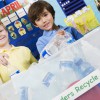 There is increasing evidence that, with the right approach, people can be encouraged to change. From recycling, composting, and picking up pet waste to saving water, the public is adopting new behaviors and giving up old ones. The tools to do this can be found in Community Based Social Marketing (CBSM). This 6-page fact sheet was written by Paul Monaghan and Martha Monroe, and published by the UF Department of Agricultural Education and Communication, September 2013.
There is increasing evidence that, with the right approach, people can be encouraged to change. From recycling, composting, and picking up pet waste to saving water, the public is adopting new behaviors and giving up old ones. The tools to do this can be found in Community Based Social Marketing (CBSM). This 6-page fact sheet was written by Paul Monaghan and Martha Monroe, and published by the UF Department of Agricultural Education and Communication, September 2013.
http://edis.ifas.ufl.edu/wc149
Community-Based Social Marketing (CBSM): Extension’s New Approach to Promoting Environmental Behavior Change (WC119)
 This 3-page fact sheet explains some of the basic definitions and concepts of CBSM and provides Extension agents with additional choices for designing, implementing, and evaluating their programs with the public. Written by Paul Monaghan, and published by the UF Department of Agricultural Education and Communication, September 2011.
This 3-page fact sheet explains some of the basic definitions and concepts of CBSM and provides Extension agents with additional choices for designing, implementing, and evaluating their programs with the public. Written by Paul Monaghan, and published by the UF Department of Agricultural Education and Communication, September 2011.
http://edis.ifas.ufl.edu/wc119
